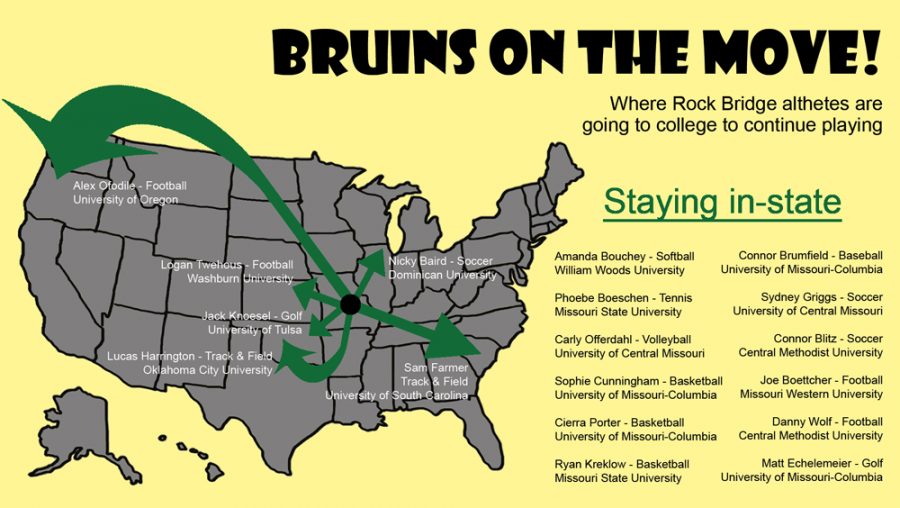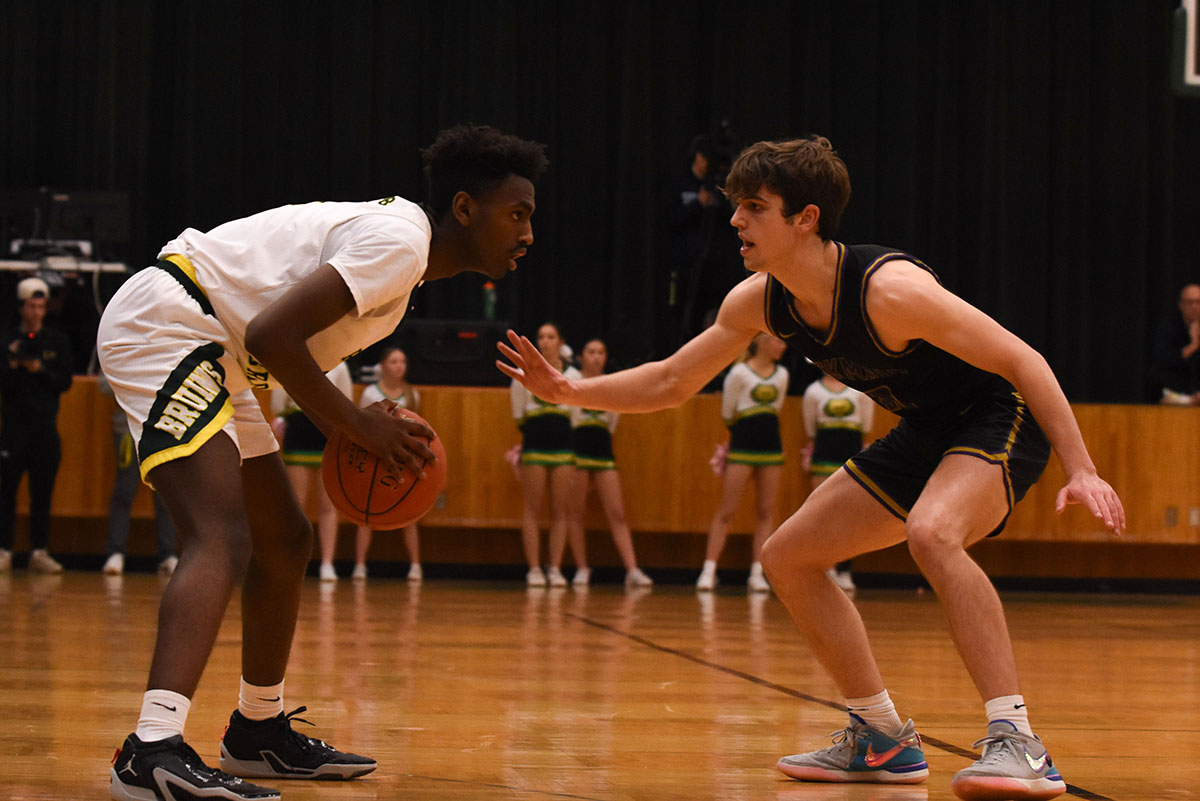On April 16 in the school cafeteria, eight RBHS senior athletes gathered to sign national letter of intents to their respective schools and make an official commitment to continue their athletic careers.
Surrounded by their family, friends and coaches these athletes cap off their high school careers. This moment has been a long time in the making, a whole lifetime of work, and signifies more hard work in the future.
This year RBHS has had a myriad athletes sign with colleges to continue athletics in the fall. Athletes must follow NCAA guidelines, succeed in the classroom and, of course, perform well athletically.
Typically, the recruiting process starts during a student athlete’s junior year with colleges sending letters, since NCAA rules don’t allow college coaches to contact recruits through phone calls or emails until after their junior year, or for some sports until their senior year has begun.
“They first start sending letters out the end of your sophomore year and through your junior year because they aren’t allowed to email you till your junior year and then after July 1 after your junior year, they can start calling you,” senior Sam Farmer, who signed with the University of South Carolina to run cross country, said. “So I’ve been emailing a couple of places like Belmont. July 1 they could start calling you. I was talking to Belmont, Butler, and after that you talk to them for awhile and then after cross country season you start going on visits.”
After talking to coaches during a recruited athlete’s senior year the next step is to schedule a visit to tour a school and see the campus and athletic facilities, meet with coaches and talk to academic advisors. Prospective athletes are allowed to take up to five, expenses paid official visits to schools.
For senior basketball player Sophie Cunningham, the recruiting process was drastically different. Instead of following the usual process, Cunningham followed in her older sisters footstep and committed to the University of Missouri.
“I commited coming out of eighth grade so I really didn’t even have a recruiting process,” Cunningham said. “But I knew I would have lots of options throughout my high school career with colleges, but I knew no matter what college offered me I was going to go to Mizzou.”
Although Cunningham committed early, she still took an official visit to Mizzou in the fall of her senior year. During Cunningham’s visit she was taken on a tour of Mizzou and spent time getting to know the team she would be joining next year.
Farmer’s visit was similar to Cunningham’s. She spent time with current team members and got to know the coaching staff, but it was drastically farther away and not in her home town.
“For South Carolina they buy your plane tickets if you’re far away, and they fly you out there. For my South Carolina one, I flew in on Saturday and then Saturday night, we went to dinner with the team. Then they take you back to your host dorms and you just hang out with the girls and get to know them,” Farmer said. “On Sunday we went to a girls basketball and South Carolina girl’s were ranked No. 1. There were like 17,000 people at the game. Monday you have all your academic appointments. They set you up with appointments with the head of the major that you want and there is an athletic academic advisor that you talk to, and then there is a compliance person you talk to about like rules. Then you talk to the coach at the end and that is when they give you the offer.”
Official visits give athletes a good way to judge and measure schools against each other and the ability to weigh the pros and cons of each institution.
Senior basketball player Ryan Kreklow took visits to Eastern Illinois, Drake, Northern Iowa, Missouri State, Oral Roberts and Tulsa. On Kreklow’s visits, he had a chance to experience the team chemistry of each program, an important factor in his decision making process.
“With Missouri State I had a good connection with the team and coaches,” Kreklow said. “I liked what the coach was doing with [the basketball program] and where it was headed so that was a big factor in where I wanted to go.”
After athletes visit it becomes time to make a decision with a host of characteristics playing a role in the final decision. For Farmer, a host of factors including school size and academics influenced her decision.
“[South Carolina] just had the overall best fit for me,” Farmer said. “I wanted to go to a bigger school which I figured out after I visited some of the smaller schools. It was a big school and it had my major, which is psychology and neuroscience, and I really liked the team and my visit was fun. If you’re visit isn’t fun then you’re not really going to like it. All my visits were fun, but you also have to get along with the girls on the team really well because that is who you’re going to spend all your time with once you get there.”
Kreklow’s decision making process ran a similar route with schools dropping off his final list because of team chemistry.
“For a few schools, it was team chemistry,” Kreklow said. “There were guys I couldn’t see myself playing with or like being around. My brother had some troubles with a few schools he went to where he liked the coaches and everything, but some of the players weren’t his type of people so that was a big reason why some schools dropped off.”
One thing that didn’t influence Kreklow’s choice in schools was the athletic facilities a school had to offer.
“The facilities [don’t matter] too much. That’s not really what I was looking for whenever I was choosing a school,” Kreklow said. “I could go to a school that just had one gym and some balls and as long as I liked the coaches and the team and felt like I could contribute there.”
During his recruiting process Kreklow was in a unique situation with both of his older siblings Ricky and Ali having gone through the process and his parents being Divison I volleyball coaches at Mizzou, who are very familiar with recruiting.
“[My parents] go through the recruiting process with people that they bring in pretty often,” Kreklow said. “They just said, ‘Pick a place where you like and you feel like you fit in the most.’ That’s basically what I did with Missouri State. They just wanted me to picture myself if I could be around the people, because that’s what you do when you play sports. You’re around your team and coaches probably most of the time. You don’t have very much free time outside of that.”
At the end of the long process comes signing day when athletes make their commitment final. After four years of time in the gym, on the track or in the weight room, their plans for next year, and potentially five more years, are in place.
“It was relieving to have that weight off your shoulders of knowing where you are going to go and its all over,” Kreklow said. “After the three or four years of stressing out over where you’re going to go or what schools you are going to talk to, or things like that, it felt relieving to just get it over with and just look forward to what’s ahead.”
By Graham Ratermann

Categories:
The long journey of a college recruit
May 5, 2015
0
Tags:
More to Discover













































































